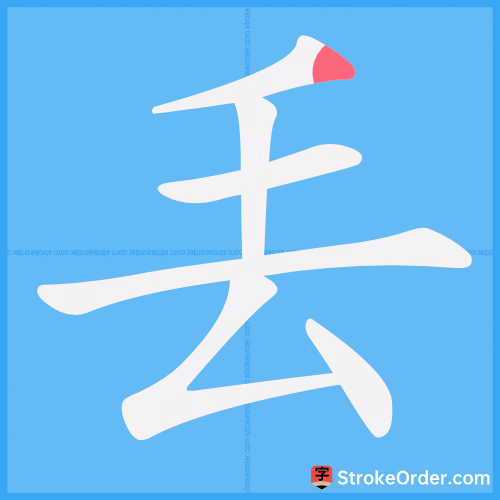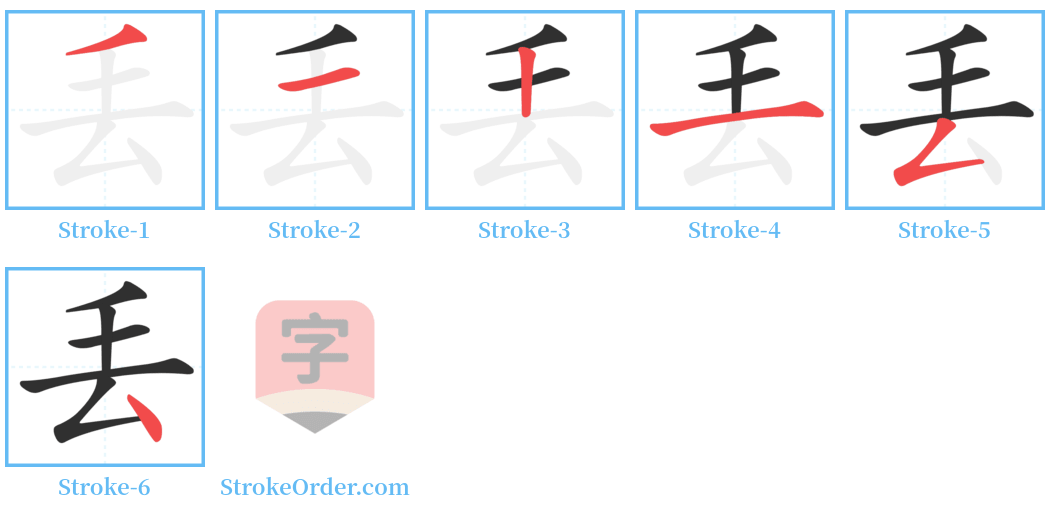丟 Stroke Order
Animated Stroke Order of 丟

Stroke Order Diagrams for 丟

Step-by-Step Handwriting Guide for 丟

Learn to Write Chinese Characters with Video Tutorials
Watch the video of writing the Chinese character "丟", learn the correct stroke order (笔顺) of the character "丟", and master the standard way of writing the character "丟".
Free Printable Handwriting Practice with Stroke Order: 丟
Printable Writing Practice Worksheet of "丟" in Portrait Orientation (Tian Zi Ge)

Printable Writing Practice Worksheet of "丟" in Landscape Orientation (Tian Zi Ge)

Information of 丟
Pinyin
diū
Radical
一
Strokes
6 strokes
Usage
★★★
Definition
to lose / to put aside / to throw
丟 [diū]
1. 同“丢”。
Translation: Same as "丢" (diū).
2. 同“丢”。《正字通•一部》:“丟,俗作丢。”按:古籍中多作“丟”,今“丢”通行。
Translation: Same as "丢". From the "Correct Character Usage" (Zhèngzìtōng): "丟" is commonly written as "丢" in modern usage; in ancient texts, it often appears as "丟".
3. 〈動〉
Translation: (Verb)
4. 丟失;遺失 ([En.] lose; mislay).
Example: 丟脫 (loss); 丟帽落鞋 (describing an urgent and hurried state).
5. 拋棄;撇開 ([En.] throw).
Example: 丟卻 (abandon; discard); 丟搭 (waste; abandon; let go); 丟下笆兒弄掃帚 (describing an overwhelming burden of tasks).
6. 用眼色暗示 ([En.] wink).
Example: 丟風撒腳 (showing off, being carefree).
7. 擱置 ([En.] lay aside).
Example: 丟番 (put down); 技術丟久了就生疏了 (technique becomes rusty if not practiced for a long time).
8. 遺留 ([En.] leave over).
Citation: 《儒林外史》: 我一生是個無用的人,一塊土也不曾丟給你們。
Translation: "Throughout my life, I have been a useless person; I have not left a piece of land for you."
9. 使出;施展 ([En.] display).
Example: 丟門戶 (putting on an act); 丟開解數 (relaxing one’s effort; displaying skills and tricks); 丟抹 (dressing up; also known as "丟丟抹抹", referring to being shy).